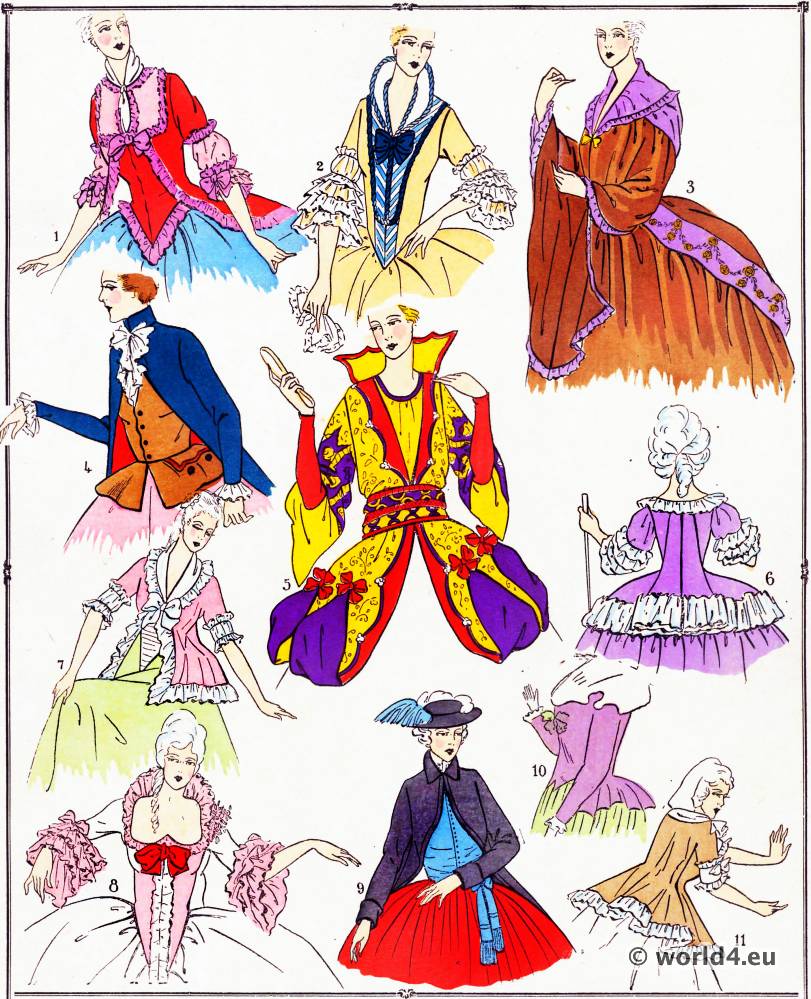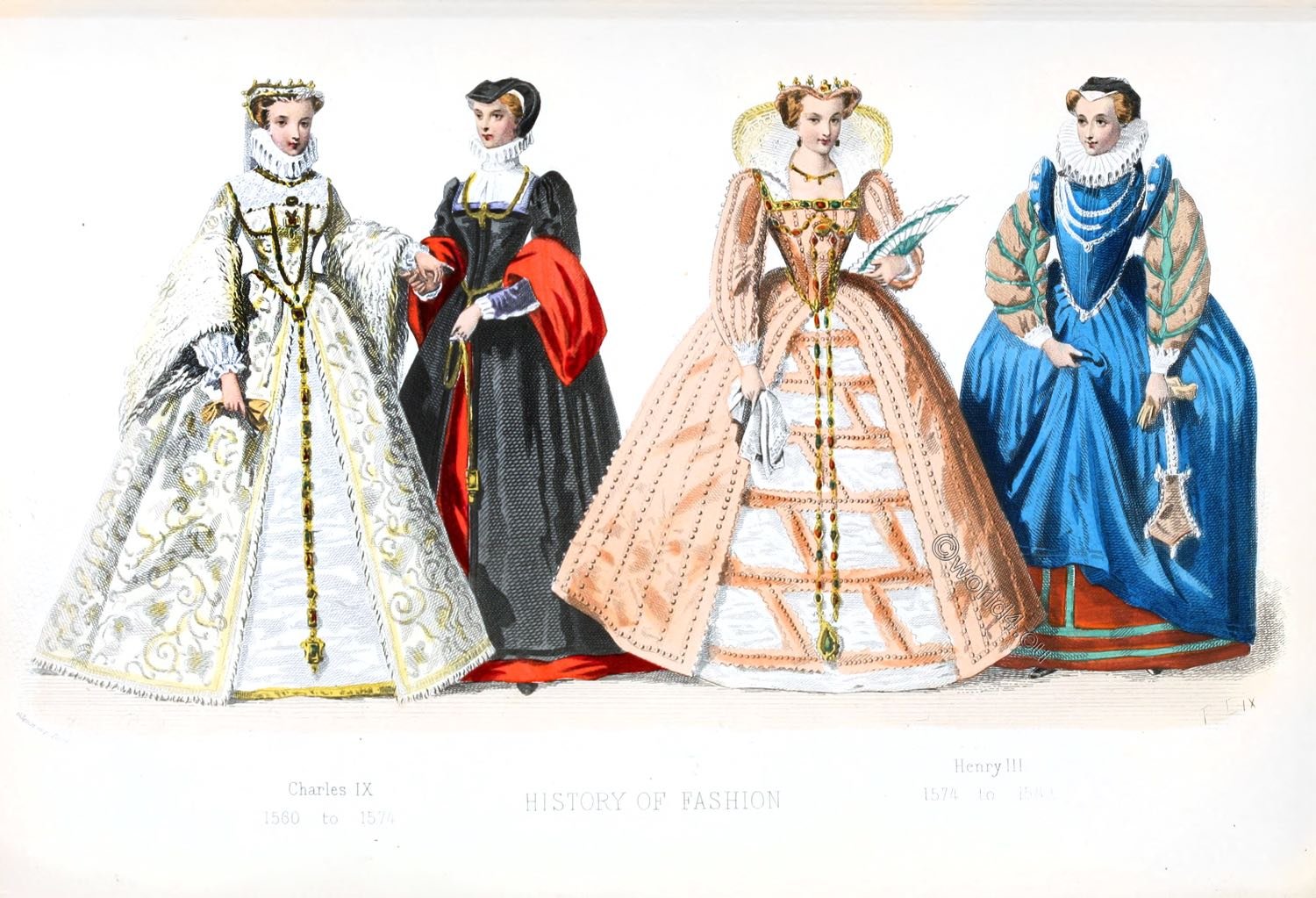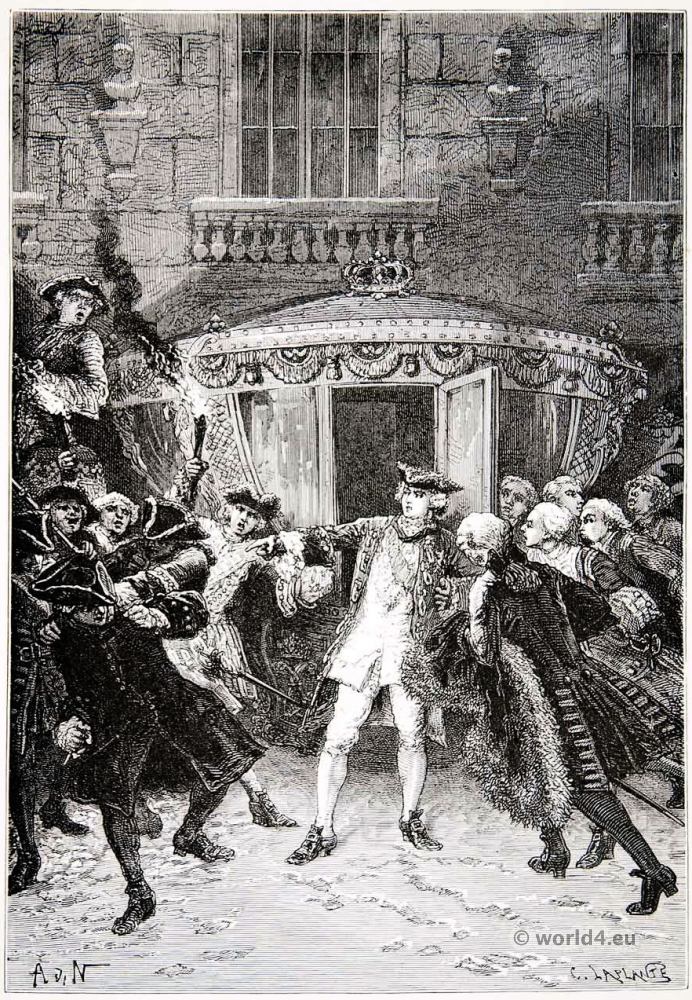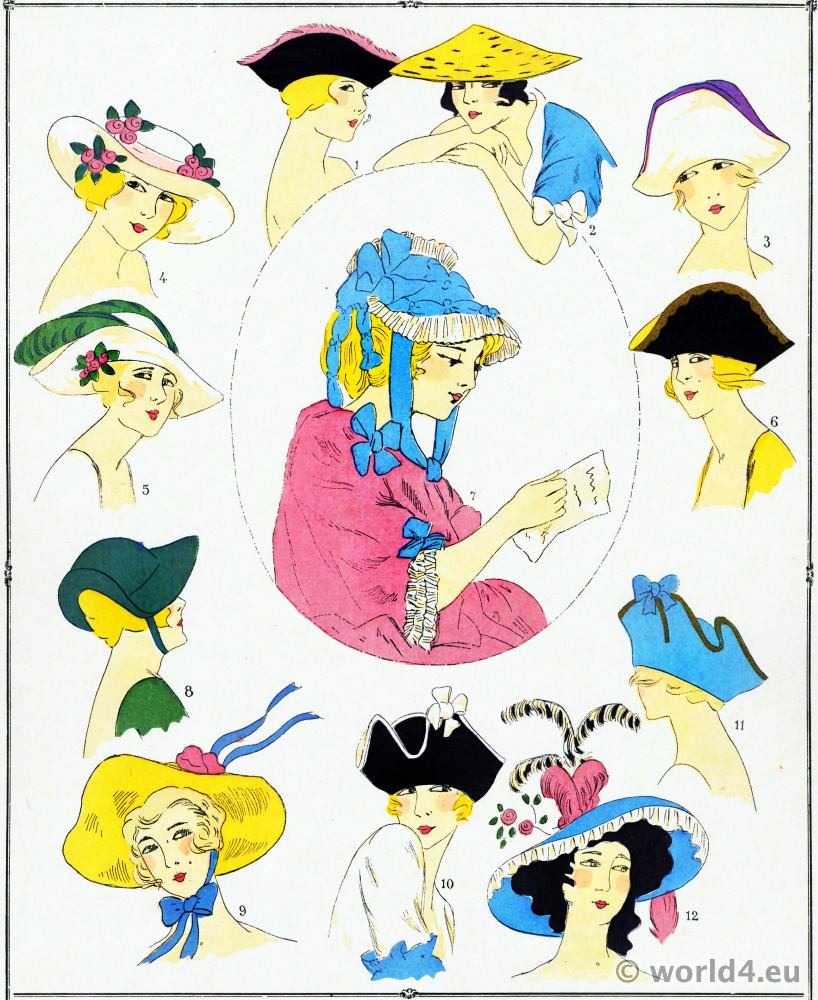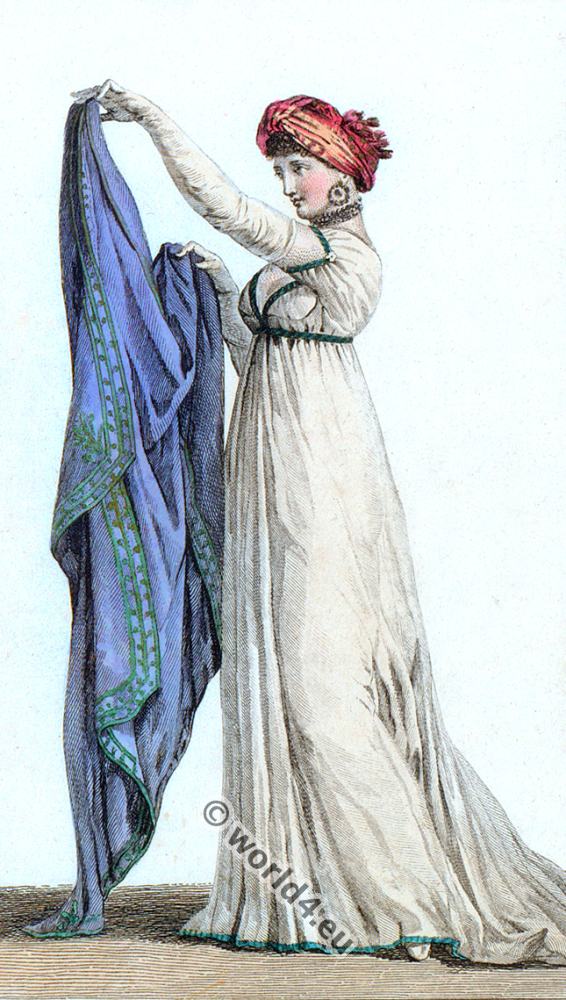L’histoire du costume féminin français. Les modes sous Louis XVI et Marie Antoinette 1774−1789. La Mode du Rococo. Corsages – Planche 6.
The history of French women’s costume. Fashions under Louis XVI and Marie Antoinette 1774-1789. Bodices, Corsages – Plate 6.
The fashion of the Rococo period. Precious extravagance under Louis XVI.
- 1. Pink taffeta bodice, surrounded by a ruche of pink ribbon, fichu collar, pink bow on bodice and sleeves, trimmed with a lace ruffle. 1. Corsage en taffetas rose, entouré d’un ruché de ruban rose, col fichu, nœud rose au corsage et aux manches, garni d’un jabot de dentelle.
- 2. Bodice (1775), forming a waistcoat, in blue and white striped velvet, blue silk lingerie cordelière forming a Médicis collar. Blue bow, long plain sleeves with several rows of Valenciennes, funnel cut. 2. Corsage (1775), formant gilet, en velours rayé bleu et blanc, cordelière de soie bleue lingerie formant col Médicis. Nœud bleu, manches unies longues, avec plusieurs rangs de Valenciennes, taillées entonnoir.
- 3. Polonaise taffeta “queen’s hair” Indian border trim. 3. Polonaise de taffetas «cheveu de la reine» garniture en bordure d’indienne.
- 4. Bust-hugging waistcoat bodice, straight basques, basque pockets, black button, on a havana waistcoat background, jacket covering the waistcoat in blue cloth, straight collar. Lace frill. 4. Corsage gilet serrant le buste, basques droites, poches à la basque, bouton noir, sur fond de gilet havane, veste recouvrant le gilet en drap bleu, col droit. Jabot de dentelle.
- 5. Chinese corsage from the ballet Les Indes Galantes, *) the inspiration for Chinese fashions at the time. 5. Corsage chinois, tiré du ballet des Indes Galantes, inspirateur des modes chinoises d’alors.
- 6. Purple taffeta camisole, pleat in the back, encircling the waistcoat, neck and collar all around the bottom, ruched white taffeta top with sleeves, smaller ruched white taffeta. 6. Caraco en taffetas violet, pli dans le dos, entourant le gilet, le tour du cou et le col en tout autour de la basque, haut ruché de taffetas froncé blanc aux manches, ruché de taffetas blanc plus petit.
- 7. Pink linen morning jacket trimmed with a white ribbon gathering, white bow holding the lingerie kerchief. 7. Veste du matin en linon rose bordé d’un froncé de ruban blanc, nœud blanc retenant le fichu de lingerie.
- 8. Very low-cut bodice coming down to a point on the skirt; a ruffle of ribbon all around the neckline and forming a collar; ribbon also forming a fastening on the front; rose pompon on the shoulder, large lace hoof on the sleeves. 8. Corsage très décolleté descendant très en pointe sur la jupe; ruché de ruban, tout autour du décolleté et faisant col; ruban formant également fermeture sur le devant; piquet de roses pompon à l’épaule, large sabot de dentelle aux manches.
- 9. Smoky grey cloth jacket attached at the collar, opening onto a bright blue waistcoat, black buttons. Narrow sleeve, small cuff, grey felt hat, feathers, bright blue bird’s wing. 9. Veste de drap gris fumée attaché au col, s’ouvrant sur un gilet bleu vif, boutons noirs. Manche étroite, petit poignet, chapeau de feutre gris, plumes, aile d’oiseau bleu vif.
- 10. Woman in pierrot, fitted bodice, purple, small basque behind, white linen liar kerchief. 10. Femme en pierrot, corsage ajusté, violine, peti te basque derrière, fichu menteur en linon blanc.
- 11. Morning bodice in lingerie, gathered flounce at bottom of sleeves trimmed with gathering and ribbon bow. 11. Corsage du matin en lingerie, volant froncé au bas des manches garnies d’un froncé et d’un nœud de ruban.
*) Les Indes galantes (roughly “the gallant India”) is the first of a total of six ballet operas (opéra-ballet) by the French composer Jean-Philippe Rameau (was a French composer, harpsichord virtuoso, organist and music theorist. 1683-1764). It contains a prologue and four entrées (acts). The libretto is by Louis Fuzelier (1672-1752). The opera was almost completely forgotten in the 19th century, but is now considered the composer’s most famous stage work.
Source: L’histoire du costume féminin français. Les modes sous Louis XVI et Marie Antoinette 1774−1789. Paul Louis Victor de Giafferri.
Continuing
- Les Modes du Moyen Âge de l’an 1037 à l’an 1461. The Modes of the Middle Ages. 11th to 15th century.
- Les Modes de la Renaissance de l’an 1461 à l’an 1574. Fashion of the Renaissance from 1461 to 1574.
- Les Modes sous Louis XIV 1643-1715. Fashion under Louis XIV 1643-1715.
- Les Modes sous Louis XV 1715−1774. Fashion under Louis XV from 1715 to 1774.
- Les Modes sous Louis XVI 1774−1789. Fashion under Louis XVI 1774 to 1789.
- Les Modes sous la revolution 1792-1799. The Modes under the Revolution 1792 to 1799.
- Les modes du second empire 1852 a 1870. French Fashion of the Second Empire 1852 to 1870.

